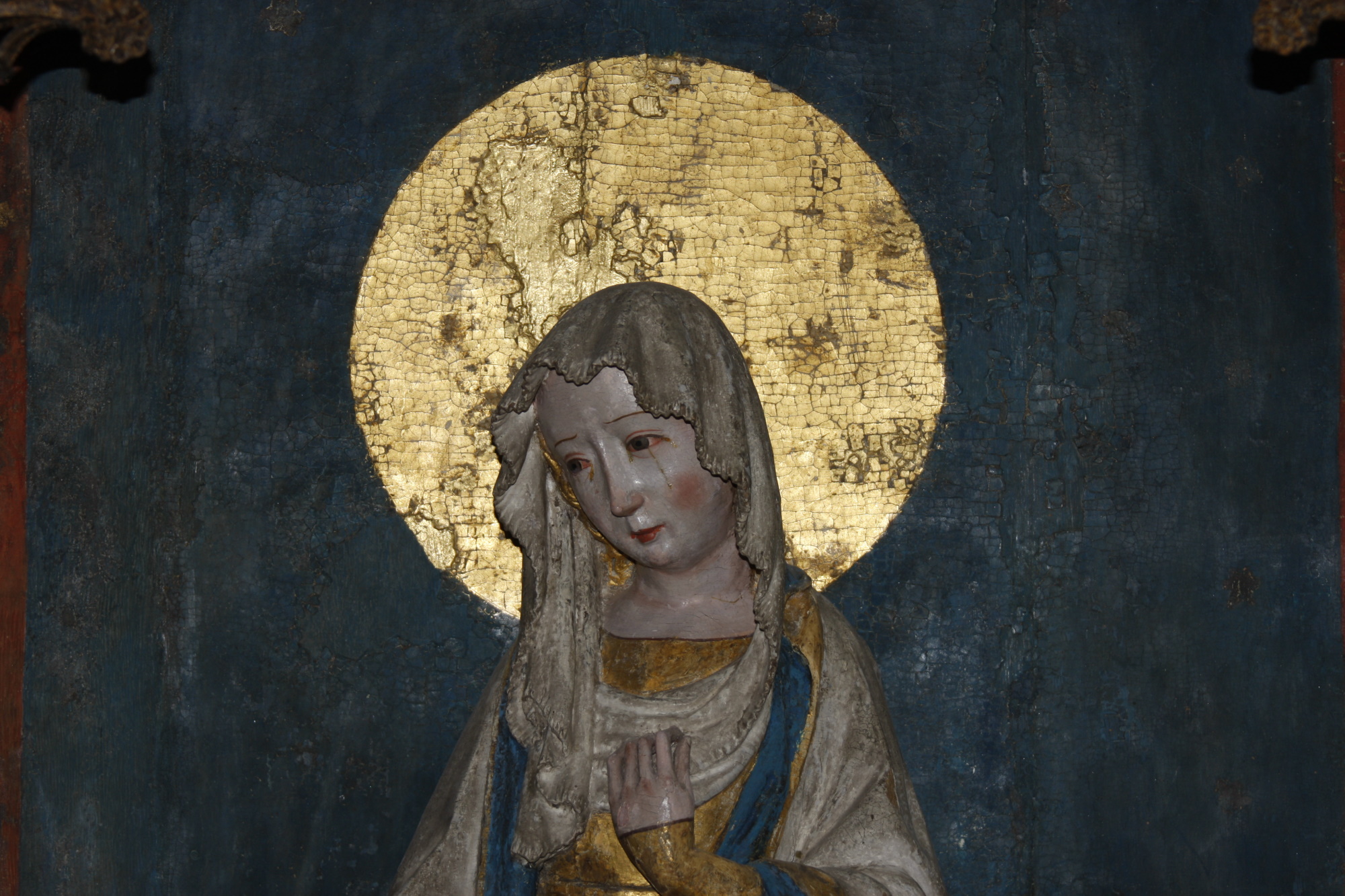In the arch that constituted the border to the nuns’ chancel hangs a representation of the crucified Jesus Christ. The arch is called a triumphal arch and the crucifixion image is a so called Triumph of the Cross. The Triumph of the Cross is the most important piece of art in the church, and it was made by a very skilled woodcarver, probably intended for the re-opening in 1444.
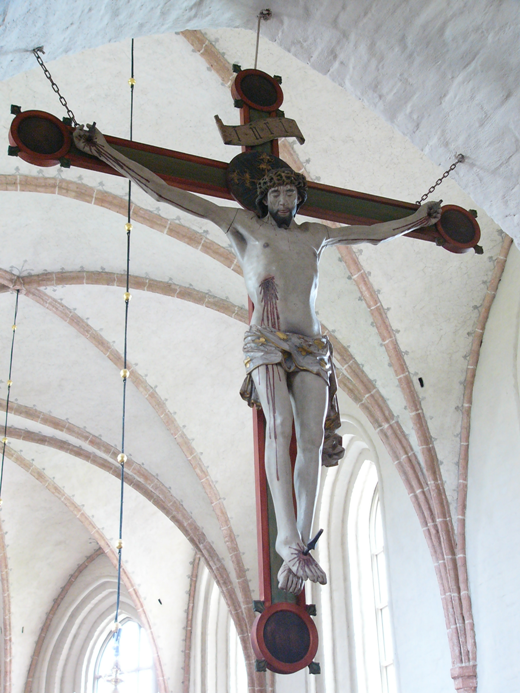
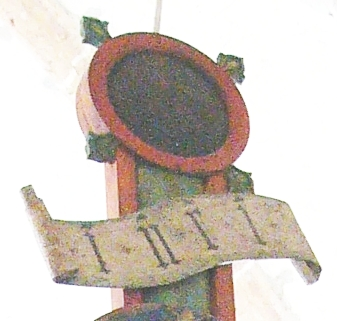
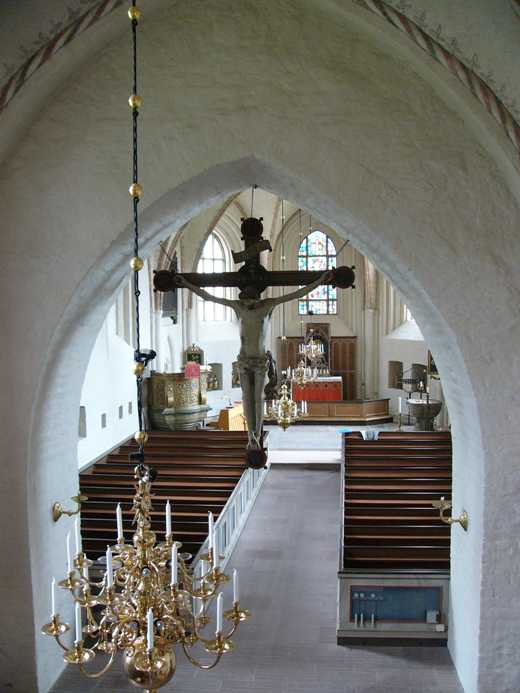
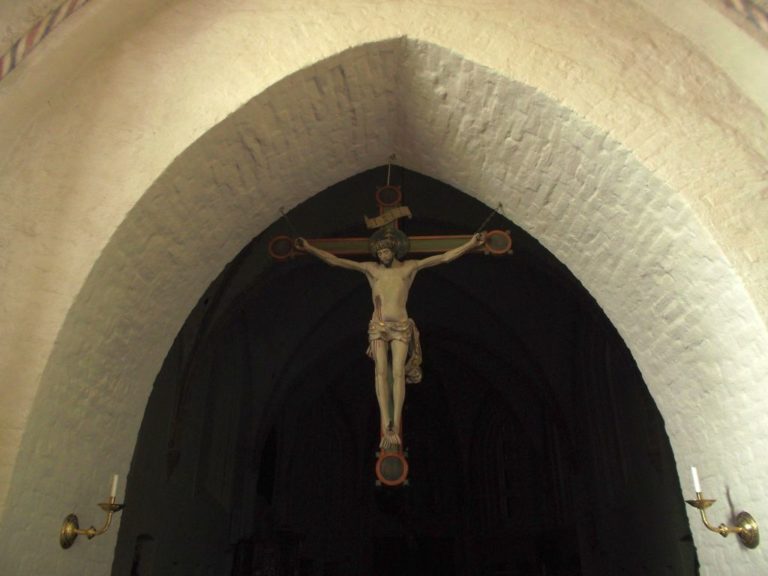
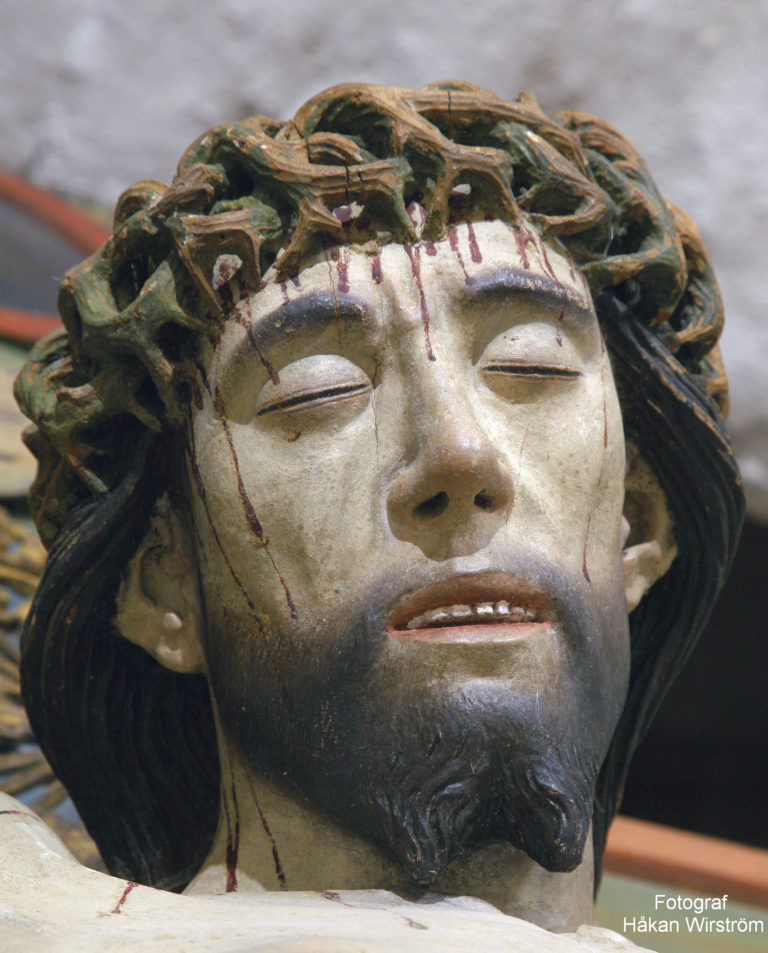
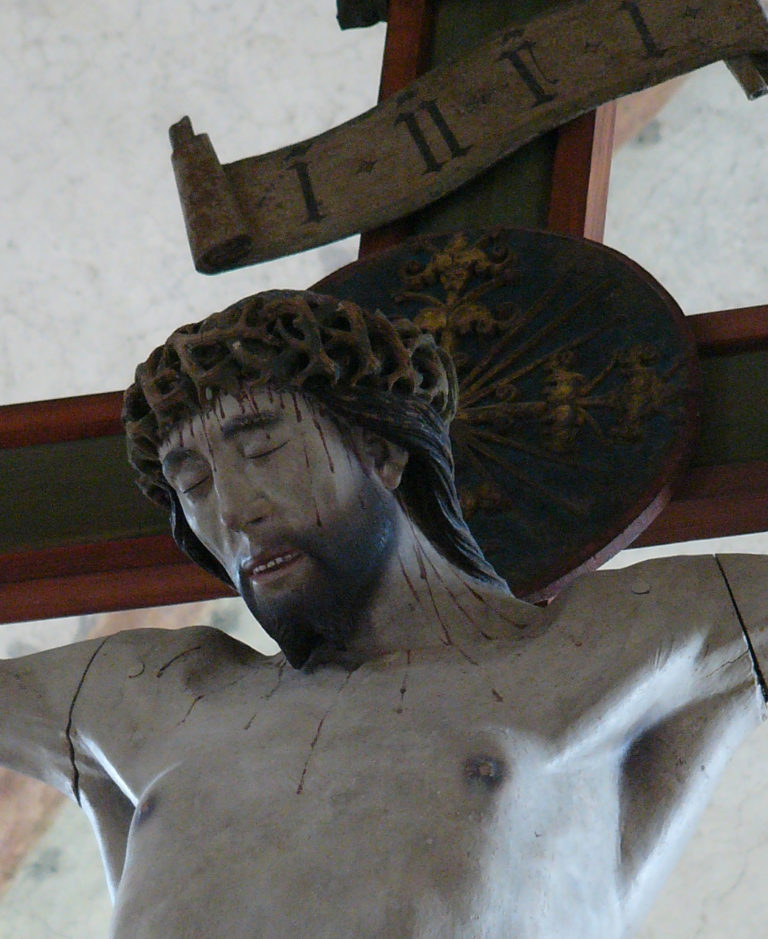
The founder of the Cistercian order resisted all unnecessary decorations of the church room, which was meant to characterize simplicity and humility. The only exception was depictions of crucifixion. They had a unique status since they called for meditation over Jesus’ suffering and death. Christ’s body is nailed to the cross with three nails, one nail through each hand, and one through the joined feet. The body has no signs of scourges, but on the chest there is a big, bleeding wound after the lance that was struck into the right side. The crown of thorns has been pushed down hard, causing blood coming down the head and throat. The head is tilted to the side, mouth half-opened, and eyes shut.
Christ’s suffering is obvious, but restrained. During this genre that we know as Gothic, one used to depict Christ as dead, often with emphasize on the suffering. However, in this case the suffering is toned down, the body levitating almost weightlessly. It is an image of suffering being elevated.
On the crucifix, dated latterly, there is a sign with inscription i.n.r.i. It is an abbreviation of the Latin words: I(esus) N(azarenus) R(ex) I(udaeorum), which means Jesus from Nazareth, King of the Jews. The crucifix is very accurately and realistically depicted, apart from the fact that gravity seem to have ceased. The body of Christ is carved in walnut, as for the nails and the short white cloth with the golden four-marks. The crown of thorns is carved in the same piece as the head. Behind the head there is a Gloria painted in blue with crucifier flowers and golden rays. The crucifix is an anonymous piece of handicraft, probably from Flanders, and is dated to mid-15th century.
SG
